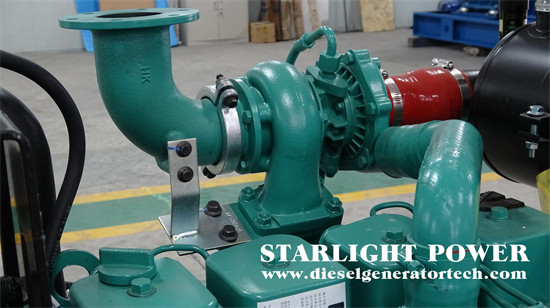If the generator set does not start according to the starting requirements, it may accelerate the depreciation of the generator set and easily cause unnecessary losses and waste. In order to ensure the normal operation of the generator set, Starlight power generation equipment reminds users to follow the rules when starting the genset, and to avoid the following bad starting methods.

1. Starting during a long period of time with a motor, the battery will be discharged during a long period of time with high current, which can easily cause bending of the electrode plate. Moderate discharge can easily cause vulcanization of the electrode plate, resulting in the battery being scrapped.
2. Dry start: After the generator set is started, it can participate in cooling water, which can easily cause the body parts to heat up too quickly and accelerate wear. Adding cold water to a hot car can also cause the body to explode.
3. Enhanced electric power starting: By connecting two batteries in parallel to supply power to the motor, the power is doubled, resulting in significant heat generation and the formation of starting switches, motor contacts, starting wires, rotors, stator wires, and traction starting: Cold vehicle operation can easily exacerbate the wear and tear of transmission mechanisms and walking forms, as well as mechanical chaos.
4. Starting with increased current: To improve the RPM of the motor, blindly turn on two batteries to supply power to the motor. Not only is it easy to cause motor overspeed, generate centrifugal force, and accelerate the bearing, rotor, and stator coils, but also due to the different technical conditions of the two batteries, charging a good battery to a bad battery can easily damage the good battery.
5. Shutdown start: When shutdown, the air filter needs to be removed to allow dust to directly enter the cylinder. Prone to detonation, forming the body; Easy to strengthen carbon deposition in Pingyuan power generation units to accelerate the wear of cylinders, pistons, and piston rings, resulting in a decrease in current.
6. Generator set maintenance and sloping start: Due to the generator not having agreed preheating, the lubricating oil viscosity is high, smooth and not good, which can easily exacerbate locomotive wear and brake failure, leading to car accidents.
7. Injecting Cummins into the air inlet pipe for starting: this method is extremely extreme. After the diesel engine catches fire, it is easy to produce knock, which will increase the impact load of moving parts and damage the whole machine; It is also easy to cause speeding, carbon deposition, and instantaneous overheating of the diesel engine.
8. Maximum throttle start: Placing the throttle at maximum start can easily lead to excessive fuel injection into the cylinder, rich mixed gas, and less easy starting; After starting, the speed increases sharply, which can easily cause damage and wear to the components.
Jiangsu Starlight Power Generation Equipment Co., Ltd. is an early professional manufacturer of generators and diesel generator sets in China. The company has first-class national-level large-scale production and load testing equipment. Provide users with long-term diesel generator set sales, leasing, technical consultation, commissioning, maintenance, training services and generator set trusteeship business. If you would like to get more information welcome to contact us via sales@dieselgeneratortech.com.
Comments
Post a Comment